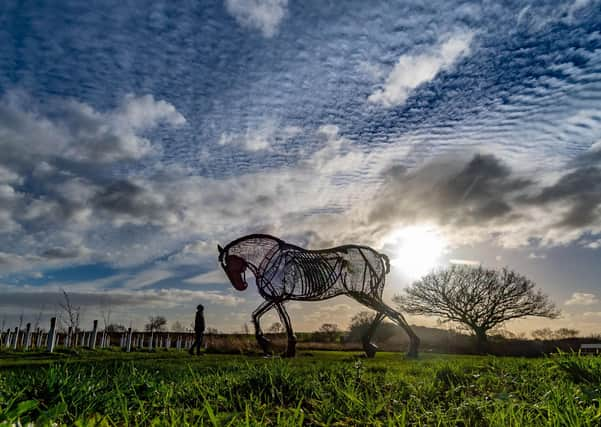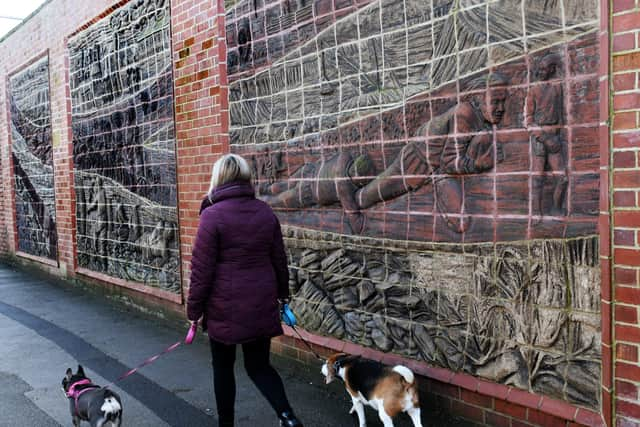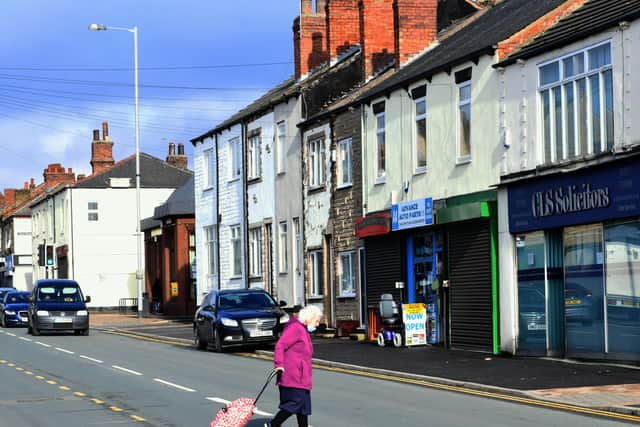Why there’s much more to Featherstone than coal mining and rugby


When you go on your holidays and people ask you where you are from and you say Featherstone, you more or less know what is coming next. Most of the time they will say ‘Rovers?’ or they might mention coal mining. It’s a place defined by coal and rugby. It’s changing slowly. I talked to a local councillor not long ago and she told me she looked forward to the time when Featherstone would be seen as a ‘destination’ town. At one time I might have laughed and said, ‘Oh aye, I can just see somebody getting up in Harrogate this morning and announcing to their family “I think we’ll have a trip over to look at Featherstone today”.’ I didn’t though. I pondered on the journey you’d have to make to see Featherstone as a destination.
Back in the 1850s a man called John Rhodes got talking to some strangers in a railway carriage. They told him about an estate for sale on the edge of Featherstone Moor. They said there was coal to be got there. In 1861 Rhodes sank a bore hole. At a depth of 200 yards he hit gas and water. The water spurted out like a geyser and when the gas ignited, a column of flame shot more than 20 yards into the air. People came from miles around to view the spectacle and the Illustrated London News sent a journalist and an artist to report on the phenomenon they called The Burning Well. For a short while Featherstone became a tourist hotspot. Then they put the fire out and everybody went home.
Advertisement
Hide AdAdvertisement
Hide AdJohn Rhodes sank a pit he called Snydale Victoria. A couple of years later another pit, Featherstone Main, opened and then one called Ackton Hall Colliery. People flocked to Featherstone again. Only this time they came to find work. They came from all over the place, from The Forest of Dean, Wales, Cornwall and mainly the Black Country. Featherstone was founded on economic migrants. It wasn’t quite the California gold rush of 1848, but there was money in the muck (especially for the coal owners). Featherstone’s population went from a few hundred farm workers to 14,000 miners and their families within the space of a generation. They were a tough lot, working-class rebels, who stuck up for themselves. During the coal strike of 1893, a picket outside the gates at Ackton Hall Colliery was confronted by Light Infantrymen who pointed rifles. The riot act was read. A voice in the crowd shouted, ‘Go on then shoot, we’d rather be shot than hungered to death.’ The soldiers opened fire at point blank range. James Duggan and James Gibbs were killed and 20 more were wounded. It was a day folk round here didn’t forget. They still refer to it as ‘the massacre’.


Our town was dominated by coal for a century. A famous sociological survey was compiled here by three Leeds University academics, they called it ‘Coal is our Life’.
The three head gears at Ackton Hall pit loomed over us like Featherstone Rovers front-row forwards. The BBC could never show a rugby match from Post Office Road, without reference to the ‘plucky little pit village.’ Now the coal mining is gone. It’s actually been gone for a long time. Ackton Hall was the first pit to shut after the strike in 1985. The slag heaps are farm land again. Yet the culture and folk memory is still here and when the developers build their new estates they call them names like ‘Colliers Court’.
With a past as ingrained as the blue scars on a collier’s back, can you reinvent such a place? I think you can. I believe that deep down the strength of our town lies in its ability to tell stories about itself. We all need something to make a future with, Featherstone has a wealth of stories and a great cast of characters.
Advertisement
Hide AdAdvertisement
Hide AdThe older end like to say that Featherstone is a village. It isn’t, it’s a town. To be fair it’s both. The ancient village bit stands on a sandstone ridge, locals call it ‘Top o’ t’ Knob’. It was mentioned in the Domesday Book as a land owned by a Saxon thane called Ligulf. The town of Featherstone grew up a mile south of the village. It was built with great haste to a linear pattern of red brick terrace rows. There is no town centre as such, but a main street called Station Lane. Again, the older end will tell you that at one time you needn’t go out of town to buy anything. You could get everything from a mouse trap to a three-piece suite to a fishing rod in Station Lane. It was here that Sam Lowe ran a traditional barbers shop. In the early 1970s a teenaged coalminer asked Sam if he might have a haircut like David Bowie, Sam said, ‘Of course, sit down lad.’ He got a short back and sides. When the lad complained ‘That’s not a David Bowie!’ Sam just shrugged and said,


‘It would be if he came in here.’ At the other end of the lane is the Featherstone Hotel. Here in the years before the First World War, Tommy Sides, dog show organiser, entrepreneur, landlord and violinist, bought his own cinematograph machine and filmed local rugby matches. He then showed them on a white sheet attached to the tap room wall. Sky Television when it was just pie in the sky.
The local town council have been very good at promoting our heritage and have developed a genuine penchant for public art. It started when they commissioned the sculptor Julia Barton to make a red brick mural depicting the town under-and over-ground. It’s on a wall at the bottom of Station Lane. Some said it would be vandalised. It hasn’t been, it’s well liked, I believe because it tells an authentic story. The same artist was brought in again to create a memorial arch at the time of the centenary of the massacre. But it’s the most recent arts project that has got people talking. On some low lying ground, just yards from where Rhodes’s ‘Burning Well’ drew tourists, stands The War Horse in a commemorative meadow planted by local school kids. It remembers the 353 men from here who left to fight in the war and didn’t make it home. I like to think that the horse also nods to the pit ponies that we saw galloping in the fields when they were brought up from the pit at holiday times. It’s a monumental piece of work. If you have been to see the ‘Angel of the North’ you might like to come and see the Featherstone War Horse next.
When Featherstone was still on its backside after the pit shut in the 1980s, I walked down to the bus stop with a rucksack on my back. It was the first steps of a journey I was making to America. A chap I knew shouted across the road to me, ‘Where’s thy going?’ I shouted back, ‘San Francisco!’ He looked flummoxed, but just for a split second, then he shouted back ‘What on t’ Wakefield bus?’ I like to relate that story because it illustrates the dry wit of my hometown. It also tells us that every journey has to start somewhere.
Advertisement
Hide AdAdvertisement
Hide AdThe Featherstone War Horse is on one of a series of four Featherstone Heritage trails, telling the town’s story through walks guided by a phone app. The app. commissioned by the local council, is free to download.


Support The Yorkshire Post and become a subscriber today. Your subscription will help us to continue to bring quality news to the people of Yorkshire. In return, you’ll see fewer ads on site, get free access to our app and receive exclusive members-only offers. Click here to subscribe.
Comment Guidelines
National World encourages reader discussion on our stories. User feedback, insights and back-and-forth exchanges add a rich layer of context to reporting. Please review our Community Guidelines before commenting.